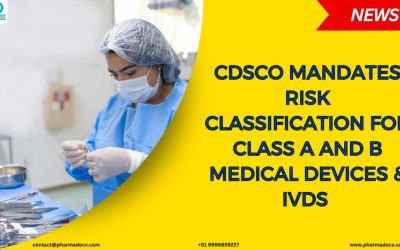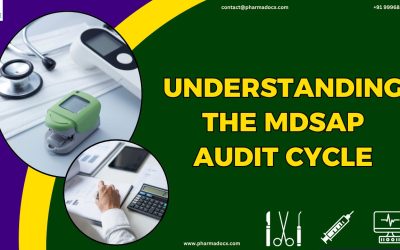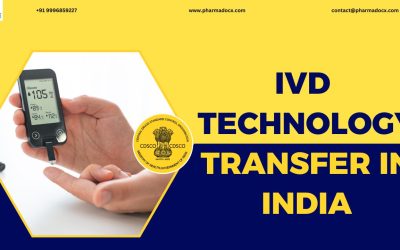The primary focus of FDA 510(k) pathway is Class I and Class II medical devices. However, medical devices that lack formal classification may still be eligible for 510(k) clearance. Unclassified devices can still follow the FDA 510(k) pathway, if a legally marketed predicate exists. For manufacturers aiming to introduce new technologies to the U.S. market, understanding this unique category will help avoid regulatory delays. In this blog, we will discuss the FDA 510(k) pathway for unclassified devices.
FDA medical device classification system
FDA has classified medical devices into three classes based on level of risk associated with the device.
- Class I: Class I medical devices are low risk and are often exempt from 510(k)
- Class II: Class II medical devices are moderate risk and usually require 510(k) clearance
- Class III: Class III medical devices are high risk and typically require Premarket Approval (PMA)
What are unclassified devices?
Medical devices that do not exactly fit into the FDA medical device classes are defined as unclassified devices. Basically, unclassified medical devices are a unique subset within the FDA regulatory framework. Unclassified medical devices are:
- Devices that were legally marketed before May 28, 1976, when the Medical Device Amendments were passed.
- Devices which have not yet been assigned a final classification.
- Devices that may still require a 510(k) clearance before they can be marketed.
Thus, unclassified medical devices are devices that fall outside the purview of FDA medical device classes but are still cleared through the 510(k) process. We will detail the FDA 510(k) pathway for unclassified devices.
Key characteristics of unclassified devices
- No formal classification: These devices do not appear in the FDA’s classification database under a specific class.
- Have a product code: FDA assigns a product code to facilitate regulatory tracking and review.
- Substantial equivalence still applies: They can serve as predicates or be cleared via 510(k) if a suitable predicate exists.
- Subject to general controls: Like other devices, they must comply with labeling, registration, and GMP requirements.
- Strategic predicates: Use unclassified devices as strategic predicates when classified options are limited.
Examples of unclassified medical devices
Unclassified medical devices are typically low to moderate risk and have been historically cleared via 510(k). We have presented some examples.
- Hearing protectors: Insert-type or circumaural protectors used to reduce sound exposure
- Speech training aids: AC-powered or battery-operated devices for individuals with hearing impairments
- Dental bite blocks: These are used to stabilize the jaw during procedures. They are not formally classified
- ENT diagnostic tools: Non-invasive instruments for ear, nose, and throat exams
- Surgical accessories: Certain retractors or positioning aids not assigned a formal class
FDA 510(k) pathway for unclassified devices
The FDA 510(k) pathway applies to unclassified devices, if the device has a predicate. Manufacturers can submit a new 510(k) referencing that predicate. For the 510(k) pathway for unclassified devices, the FDA evaluates these submissions based on substantial equivalence, just like for classified Class I or II devices. Notably, these unclassified devices must meet general controls and any applicable special controls.
Submission considerations for FDA 510(k) pathway for unclassified devices
We have presented some points to keep in mind while preparing for the FDA 510(k) pathway for unclassified devices.
- Product code: FDA assigns a product code even if the device lacks a formal classification. This helps identify applicable guidance and review branches.
- Predicate selection: Choose a predicate with a similar intended use and technological characteristics. It is critical for unclassified devices to establish substantial equivalence.
- Risk documentation: Include a robust risk analysis, especially if the device has novel features or lacks clear regulatory precedent.
- Classification watchlist: Track FDA’s ongoing classification efforts. Some unclassified devices may soon be formally classified, affecting future submissions.
- Mock audit preparation: Train teams on how to defend unclassified device submissions during audits, especially around risk justification and predicate rationale.
Step-by-Step guide to FDA 510(k) pathway for unclassified devices
Step 1: Determine unclassified status
- Search the FDA Product Classification Database to confirm the device is actually unclassified (i.e., no assigned class but has a product code).
- Verify that the device is not exempt from 510(k) requirements.
Step 2: Identify a predicate device
- Locate a legally marketed device (predicate) with the same intended use and similar technological characteristics.
- The predicate may also be unclassified but must have a valid 510(k) clearance.
Step 3: Assign product code and review panel
- Use the predicate’s product code to determine the appropriate FDA review branch.
- This code helps identify applicable guidance documents and testing expectations.
Step 4: Conduct risk analysis
- Since unclassified devices lack formal special controls, include a robust risk analysis (per ISO 14971).
- Justify how general controls and design mitigations address safety and effectiveness.
Step 5: Prepare the 510(k) submission
Include the following key elements in your submission:
- Device description and comparison with predicate for FDA 510(k) pathway for unclassified devices
- Substantial equivalence rationale
- Performance testing (bench, biocompatibility, electrical safety, etc.)
- Labeling and IFU
- Software documentation (if applicable)
- Sterilization and shelf-life data (if applicable)
Step 6: Submit to FDA via eSTAR for FDA 510(k) pathway for unclassified devices
- Use the eSTAR template for 510(k) submissions (mandatory for most devices).
- Submit through the CDRH Customer Collaboration Portal (CCP).
Step 7: Respond to FDA requests
- Be prepared for AI (Additional Information) requests.
- Clarify any gaps in predicate comparison, testing, or labeling. Provide additional documentation as demanded by the regulatory authorities.
Step 8: Receive clearance
- If the FDA determines your device is substantially equivalent, you will receive a US FDA 510(k) clearance letter.
- The device remains unclassified but can now be legally marketed in the US.
6 Common challenges unclassified medical device manufacturers face
Manufacturers face several challenges when navigating the FDA 510(k) pathway for unclassified devices. Predicate uncertainty, lack of formal guidance, and increased scrutiny during review are commonly faced. These hurdles can delay market entry and complicate regulatory strategy.
- Lack of formal classification: No assigned class (I, II, III) means manufacturers must rely on historical precedent and product codes to justify regulatory strategy. This ambiguity can lead to confusion over applicable controls, testing requirements, and submission expectations.
- Predicate device complexity: Finding a suitable predicate is harder for unclassified devices than for classified devices, especially if the predicate is outdated or lacks detailed documentation. FDA may question substantial equivalence more rigorously, especially if the predicate itself is unclassified or has limited performance data.Limited guidance and standards: Many unclassified devices lack FDA-recognized standards or guidance documents, thereby making it difficult to define testing protocols. Manufacturers must often rely on general controls and risk-based justifications, which require strong internal regulatory expertise.Testing and documentation burden: Without clear classification, FDA may request additional bench testing, biocompatibility data, or software documentation to ensure safety and effectiveness of the device. This makes FDA 510(k) pathway for unclassified devices challenging for manufacturers. This increases the time, cost, and complexity of preparing a US FDA 510(k) submission.Regulatory uncertainty: FDA may classify certain unclassified devices in the future, which could impact post-market obligations or trigger new submission requirements. Manufacturers must monitor regulatory intelligence to stay ahead of classification changes and enforcement trends.
- Audit and inspection risk: During audits, manufacturers must defend their rationale for using unclassified predicates and demonstrate robust risk management and QMS controls. Lack of formal classification can raise concerns for auditors unfamiliar with the medical device’s regulatory history.
Pharmadocx Consultants: Your trusted US FDA 510(k) consultant
Navigating the FDA 510(k) pathway for unclassified devices can be challenging and laborious. Drop an email at [email protected] or call/Whatsapp on 9996859227 for guidance on FDA 510(k) submission. Our team can prepare and file the application for you. Additionally, we will prepare and compile the necessary documentation.





